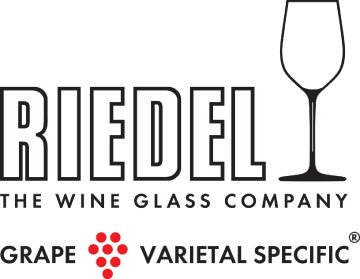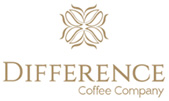How and where does Crémant d’Alsace fit in the sparkling wine market? I have a very soft spot for Alsace. I love the wines, the food, the people and the whole fairy-tale land that is part of the package, but of all Alsace wines, the one style I have always had difficulty coming to grips with is Crémant d’Alsace. At first I wondered whether it was because I had been spoilt by Champagne and expected too much from Crémant d’Alsace, but I have since found fine and fascinating sparkling wines produced in Italy, California, Australia, New Zealand, England and many other places. Recently I have even been impressed by Cava, even though that has been a running sore with me for more than a quarter of a century. If Cava has proved one thing for me, it is that I do not have any geographical-based prejudices. Give me the quality and I’ll sing about it, wherever it comes from. As Winston Churchill was inclined to say “I’m easily pleased with the best!”.
I have tasted some fine Crémant d’Alsace, but not often and not consistently, vintage after vintage, or non-vintage blend after non-vintage blend. It is also one of the least-known sparkling wines in the world outside of its own region. Who would think that Crémant d’Alsace is the largest Crémant appellation in France? Certainly not your average fizz consumer in the UK or USA. I need to taste more Crémant d’Alsace on a regular basis and I would like to see more Crémant d’Alsace entering The Champagne & Sparkling Wine World Championships. I am sure that there must be Crémant d’Alsace of gold medal potential produced every year, if only I tasted enough of the wines often enough. CIVA sent me the following selection and, to be honest, I think I have been a little overgenerous in my verdicts, but on the other hand, I am sure that had I tasted magnums, some of these wines might have been gold medal standard.
It might not endear me to Crémant d’Alsace producers and it might therefore be counter-productive if my sole aim is to entice more of them to enter The Champagne & Sparkling Wine World Championships, but these wines would improve if some producers:
- Built up larger, more complex stocks of reserve wines.
- CO2 levels were reduced even further to produce a softer, silkier mousse.
- Ring-fenced crémant vineyards and grew more appropriate clones or massal selections.
- Considered hiring a world-class specialist sparkling wine consultant.
The following wines were tasted blind and the verdict is my personal view of the medal ranking they deserve. However, I am just one judge and it takes the agreement of all three judges for each medal awarded at The Champagne & Sparkling Wine World Championships:
Cave Jean Geiler NV Crémant d’Alsace Cuvée 1926
Grape variety: 60-70% Auxerrois, 20-30% Pinot Blanc, 10-20% Chardonnay
Soil: Alluvial
Base year: 2009 (plus reserves: 20% 2008)
Disgorged: June 2012
Dosage: 7g/l, Total acidity: 7.6g/l (expressed as tartaric acid)
Fresh, crisp, clear and precise, with nicely focused, classically yeast-complexed fruit and acidity tapering to an elegant, clean finish. Remarkable clarity for nearly two years of post-disgorgement ageing.
Verdict: Silver.
Grands Vins Kuehn NV Crémant d’Alsace Prestige
Grape variety: 75% Auxerrois, 15% Pinot Blanc, 10% Chardonnay
Soil: Alluvial
Base year: 2011 (plus reserves: 25% 2010)
Disgorged: January 2014
Dosage: 12g/l, Total acidity: 5.8g/l (expressed as tartaric acid)
From its pale-lemon colour, the tropical fruit aromas on the nose might be somewhat unexpected, but the fruit on the palate is really quite linear and tapers nicely with well-balanced fruit and acids at the end, finishing with good and persistent aftertaste of yeast-complexed, tropical fruits and a hint of spice.
Verdict: Bronze or possibly Silver.
Wolfberger NV Crémant d’Alsace Brut
Grape variety: 100% Pinot Blanc
Soil: Limestone mainly
Base year: 2012 (100%)
Disgorged: January 2014
Dosage: 8g/l, Total acidity: 6g/l (expressed as tartaric acid)
An attractive, pale-lemon colour with hints of white gives way to a surprising richness of fruit on the palate, but the classic lean structure and fine mousse make a much lighter, more elegant balance than might be expected for such richness. Overall, this sparkling wine is more correct than great or special, yet impressive nonetheless.
Verdict: Bronze or possibly Silver.
Cave de Ribeauvillé NV Crémant d’Alsace Brut Giersberger
Grape variety: 70% Pinot Blanc, 30% Auxerrois
Soil: Clay-limestone
Base year: 2011 (plus reserves: 18% 2010, 6% 2001-2009)
Disgorged: January 2014
Dosage: 9g/l, Total acidity: 7.9g/l (expressed as tartaric acid)
A pale to very pale lemon colour, with exotic, spicy-mango aromas leading to a rich middle palate and finishing cleanly, with acids dominating.
Verdict: Bronze or possibly Silver.
Domaine Zinck NV Crémant d’Alsace Rosé Brut
Grape variety: 100% Pinot Noir
Soil: Clay-limestone
Base year: 2011 (plus reserves: 20% 2010)
Disgorged: May 2013
Dosage: 8g/l, Total acidity: 6.3g/l (expressed as tartaric acid)
Lovely pale-peach colour with deep-rose reflections, this elegant sparkling wine has fresh and fruity aromas with notes of almonds and wild strawberries, with a good, long, dry finish and a nice clean aftertaste.
Verdict: Bronze or possibly Silver.
Cave Vinicole de Hunawihr NV Crémant d’Alsace Calixte Brut
Grape variety: 30% Chardonnay, Pinot Blanc & Auxerrois, 10% Pinot Gris
Soil: Clay-limestone
Base year: 2011 (plus reserves: 20% 2010)
Disgorged: December 2013
Dosage: 9g/l, Total acidity: 5.7g/l (expressed as tartaric acid)
This wine has a very pale lemon colour with hints of white and green, with a classic structure and mousse to support the fruit, which is rich and clean fruit, but slightly chunky, detracting from what would otherwise be greater finesse.
Verdict: Bronze.
Ruhlmann NV Crémant d’Alsace Blanc Brut Pinot Blanc
Grape variety: 60% Pinot Blanc, 20% Auxerrois, 10% Pinot Gris, 10% Riesling
Soil: Clay-limestone
Base year: 2012 (100%)
Disgorged: February 2014
Dosage: 6g/l, Total acidity: 5.2g/l (expressed as tartaric acid)
Bright lemon colour with hints of gold and some early-developed toasty notes on the nose. A rich melange of fruit on the front palate is lifted by a good basic mousse, although it becomes a bit cloying mid-palate. Good dry balance, with richness showing again on the finish
Verdict: Commended or possibly Bronze.
Grand C 2009 Crémant d’Alsace Vintage Extra Brut
Grape variety: 100% Chardonnay
Soil: Clay-limestone
Disgorged: November 2013
Dosage: 5g/l, Total acidity: 5.1g/l (expressed as tartaric acid)
Pale gold colour, with a big, leesy-lactic, creamy-caramel, butterscotch aroma dominating. Needs a much lighter hand.
Verdict: No award or possibly Commended.
Maison Pierre Sparr NV Crémant d’Alsace Lieu-dit Clos Sainte Odile
Grape variety: 100% Chardonnay
Soil: Limestone
Base year: 2011 (100%)
Disgorged: December 2013
Dosage: 2.5g/l, Total acidity: 6g/l (expressed as tartaric acid)
A nice pale-lemon colour, but the nose is undistinguished nose and the palate is dominated by an unpleasant bitterness. In addition to a rather damning note, I could not understand why so much money was spent on the presentation of this wine, yet absolutely no attention had been paid to how the capsule, bright red wire cage and label clashed.
Verdict: No award.
Domaine Boeckel NV Crémant d’Alsace Rosé
Grape variety: 100% Pinot Noir
Soil: Limestone
Base year: 2012 (100%)
Disgorged: February 2014
Dosage: 6g/l, Total acidity: 6.1g/l (expressed as tartaric acid)
Attractive pale-peach colour with pink reflections, but the nose is not clean, even a bit cheesy at first, although that disappeared. Not appealing on the palate either. Possibly faulty and in a clear-glass bottle, the first suspect must be DMD. No back-up bottle.
Verdict: Possibly faulty.
Domaine Charles Baur NV Crémant d’Alsace Rosé
Grape variety: 100% Pinot Noir
Soil: Clay-limestone
Base year: 2011 (100%)
Disgorged: November 2013
Dosage: 8g/l, Total acidity: 7.7g/l (expressed as tartaric acid)
A lovely pale peach colour that is bright and inviting, but the nose has an unclean aroma that is not inviting. Could it be rot or DMD? There was not much rot in 2011, except at the beginning of the harvest, which is when crémant is usually harvested. On the other hand, this rosé is presented in a clear-glass bottle, so it could be.
Verdict: Possibly faulty.
Bestheim NV Crémant d’Alsace Brut Bestheim
Grape variety: 100% Pinot Blanc
Soil: Clay-limestone
Base year: 2011 (100%)
Disgorged: November 2013
Dosage: 10g/l, Total acidity: 7.27g/l (expressed as tartaric acid)
With its very pale colour glinting with platinum reflections and a visually ultra-fine mousse clinging to the glass, I could not wait to taste this, but it did not get within six inches of my nose before I was accosted by TCA. Sadly no back-up bottle.
Verdict: Faulty (corked).








